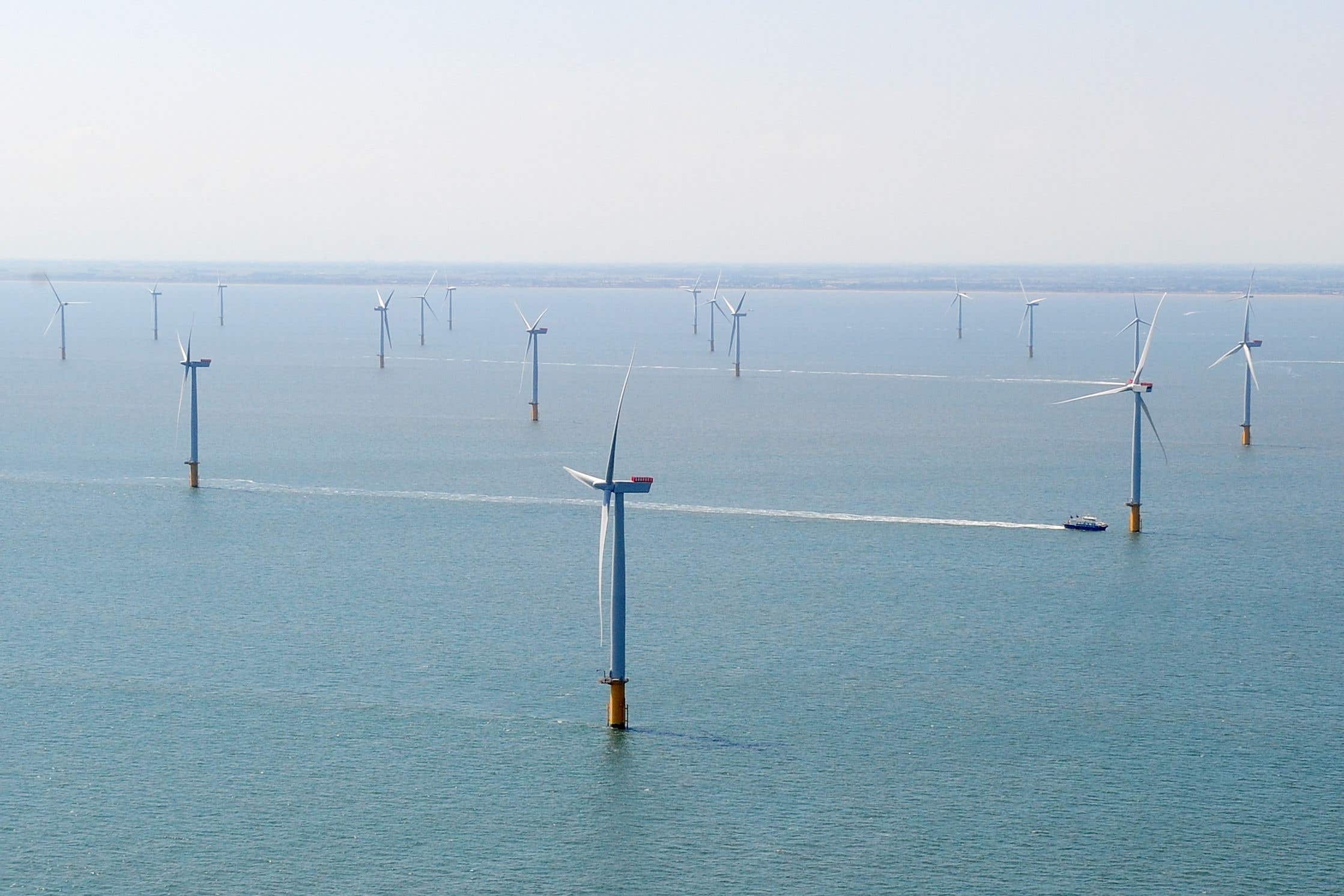Wind farms more than double Crown Estate profit to £1.1bn
The spike in profits was mainly down to option fees, payments made by companies to reserve a patch of seabed to build their wind turbines on.

Your support helps us to tell the story
From reproductive rights to climate change to Big Tech, The Independent is on the ground when the story is developing. Whether it's investigating the financials of Elon Musk's pro-Trump PAC or producing our latest documentary, 'The A Word', which shines a light on the American women fighting for reproductive rights, we know how important it is to parse out the facts from the messaging.
At such a critical moment in US history, we need reporters on the ground. Your donation allows us to keep sending journalists to speak to both sides of the story.
The Independent is trusted by Americans across the entire political spectrum. And unlike many other quality news outlets, we choose not to lock Americans out of our reporting and analysis with paywalls. We believe quality journalism should be available to everyone, paid for by those who can afford it.
Your support makes all the difference.Profit from the royal family’s land and property holdings more than doubled to a record £1.1 billion last year, driven by a short-term boost from offshore wind farms.
The Crown Estate said earnings surged by more than £658 million during the year ending March 31, from £443 million the previous year.
Profits are paid directly to the Treasury, which then hands on a small portion of the money to the monarchy, known as the Sovereign Grant, which supports the official duties of the royal family.
The Crown Estate owns the vast majority of Britain’s seabed, stretching up to 12 nautical miles from the mainland, and leases part of it to wind farm operators.
Today’s record results are the product of years of commitment and investment into helping create the UK’s world-leading offshore wind sector, as well as the active management of our diverse and resilient portfolio
The spike in profits was mainly down to option fees, payments made by companies to reserve a patch of the seabed to eventually build their wind turbines on.
The most recent round of offshore wind leasing saw the Crown Estate grant licences for three wind farms in the North Sea and three in the Irish Sea.
When the wind farms become operational, those fees are replaced by more regular, less lucrative payments to the Crown Estate, based on how much energy and revenue the turbines generate.
Chief executive Dan Labbad called the option fee uplift a “short-term positive impact” for this year and next, before a “normalisation” in profits in 2026 and beyond.
Mr Labbad added that the Crown Estate is preparing to lease more land for wind farms in the coming years, but that the fees will be less lucrative because of market changes.
The Crown Estate has just over 11 gigawatts of generating capacity across 36 offshore wind farms, but is preparing to add another 20 to 30 gigawatts by 2030, he said.
It comes after the Government confirmed new borrowing powers for the company in last week’s King’s Speech, designed to help it invest more in its estate.
Under current rules, the Crown Estate cannot use its cash reserves to invest because it must hold them against the prospect of future financial losses.
Mr Labbad said the new borrowing powers would help the Crown Estate focus on “doing more, faster” in offshore wind, including “pre-development activities” for new plots of seabed which could eventually house wind turbines.
He said the borrowing would likely amount to between 10% and 20% of the Crown Estate’s £16 billion property portfolio, and said that it would bolster profits in the “medium to long term”.
As well as Britain’s seabed and shoreline, the Crown Estate has a 180,000-acre property holding across the UK, including much of London’s Regent Street and St James’s, and vast swathes of arable land and forestry.
As a result of the Crown Estate’s soaring profits, the Sovereign Grant will increase to £132 million in 2025-6, up from £86 million in 2024-5.
Mr Labbad added: “Today’s record results are the product of years of commitment and investment into helping create the UK’s world-leading offshore wind sector, as well as the active management of our diverse and resilient portfolio.
“Our track record and remit are also enabling us to invest and lay the foundations for future value creation that will benefit the country and its finances.”